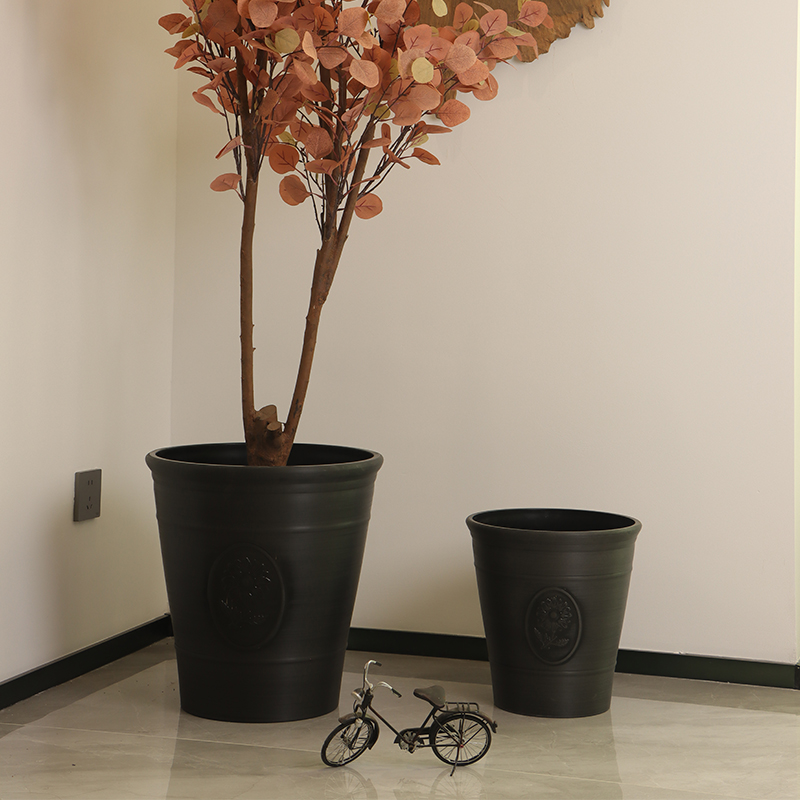Using materials and design concepts inspired by nature not only enhances the aesthetic appeal of a space but also promotes a sense of calm and connection to the outdoors. This approach can be especially effective when combined with thoughtful selection of materials such as rattan outdoor plant pots, large colorful garden pots, and even innovative elements like plastic coated fence panels.

Rattan outdoor plant pots offer a wonderful example of how natural textures can bring warmth and authenticity to garden and patio settings. Rattan, a material derived from climbing palms, has long been valued for its flexibility, strength, and natural look. When crafted into plant pots, it creates containers that complement a wide variety of plant types while blending seamlessly into outdoor landscapes. These pots often evoke a tropical or rustic vibe, adding texture and an organic feel to the arrangement.
What makes rattan outdoor plant pots particularly appealing is their versatility. They can be used alone as statement pieces or grouped in clusters for a more dynamic display. Paired with large colorful garden pots, which add vibrant pops of color and size variation, rattan pots help create layered, visually interesting garden compositions. The large colorful garden pots bring an element of boldness without overpowering the natural charm of the rattan. Together, these elements balance earthiness and brightness, making outdoor spaces feel inviting and thoughtfully designed.
Beyond individual pot materials, the use of plastic coated fence panels as part of garden design is another way to introduce natural-inspired elements with practicality. Plastic coated fence panels are durable and weather-resistant, offering protection while mimicking the look of natural wood or bamboo fences. These panels work well in outdoor spaces where maintenance and longevity are concerns, but where the natural aesthetic is still desired. Their subtle textures and colors complement both rattan outdoor plant pots and large colorful garden pots, creating a cohesive outdoor environment.
Integrating plastic coated fence panels around patios or garden beds can serve as a backdrop that highlights the natural beauty of the pots and plants they surround. The interplay between the smooth plastic coating and the organic shapes of rattan or ceramic pots adds visual interest without detracting from the greenery. For gardens that incorporate various textures and materials, this blend of natural and synthetic elements helps maintain balance while catering to practical needs such as weather resistance and ease of cleaning.
When designing a space with natural elements in mind, it is important to consider how these elements interact with the plants themselves. Rattan outdoor plant pots tend to pair well with leafy, tropical plants or cascading vines, as the natural material complements the softness and flow of the foliage. Large colorful garden pots can be used to highlight flowering plants or succulents, adding bursts of color that enhance the plant’s natural hues. The plastic coated fence panels, meanwhile, offer a neutral or subtly textured background that allows the pots and plants to stand out.
Using rattan outdoor plant pots alongside large colorful garden pots and plastic coated fence panels offers flexibility in style and function. For example, a garden corner might feature a cluster of rattan pots filled with lush greenery, framed by tall plastic coated fence panels that provide privacy and structure. Nearby, a few large colorful garden pots with bright blooms add contrast and energy to the space. This arrangement allows gardeners to play with scale, color, and texture, creating a layered look that feels both natural and intentional.
Additionally, these elements are adaptable for indoor and outdoor settings. While rattan outdoor plant pots are naturally suited for patios and sunrooms, large colorful garden pots can brighten interior spaces such as sunlit living rooms or office corners. Plastic coated fence panels, though more common outdoors, can also be creatively repurposed as room dividers or decorative screens indoors, bringing a touch of natural texture into the home environment.
Sustainability is another consideration when incorporating natural elements into pot design. Rattan is a renewable material harvested from fast-growing palms, making it a more environmentally friendly choice compared to some synthetic options. Plastic coated fence panels, while not natural themselves, can extend the lifespan of outdoor installations by resisting weather damage, reducing the need for frequent replacement. Large colorful garden pots are often made from materials such as glazed ceramics or recycled plastics, and selecting pots with responsible manufacturing practices supports sustainable gardening.
In summary, incorporating natural elements into pot design can transform any space by introducing texture, color, and a connection to the outdoors. Rattan outdoor plant pots bring warmth and a handcrafted feel, while large colorful garden pots add vibrant contrast. Plastic coated fence panels serve as practical yet visually complementary elements that tie the space together. Together, these materials offer a balanced approach to garden and interior design, blending natural inspiration with functional solutions. Whether designing a cozy balcony garden or an expansive backyard oasis, thoughtful use of these elements can elevate the experience of plant care and display.

 English
English 日本語
日本語 Español
Español Deutsch
Deutsch عربى
عربى

